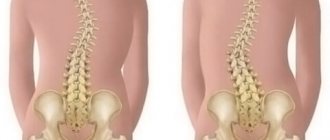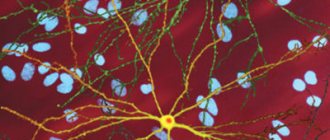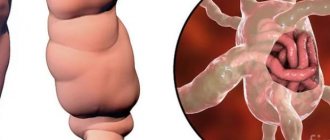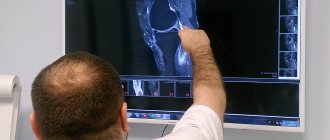Edema is a physiological response of the body to certain pathological conditions. The most common cause of leg swelling is poor circulation – this pathology accounts for up to 20% of cases. In women during pregnancy, swelling of the legs is also quite common. There is such a thing as swelling in hot weather: it appears as a result of prolonged standing and increases in the evening. Leg swelling occurs as follows:
- Fluid is retained in the tissues of the lower extremities.
- There is heaviness and stiffness in the ankle area.
- The toes and top of the foot become swollen.
- There is a feeling of tension and pain in the legs.
- At the end of the day or at night, cramps in the calf muscles may begin.
What is edema and Why do my feet swell?
Edema is an excessive accumulation of fluid in the intercellular space of tissues. It is triggered by poor diet, excessive physical activity, injury, allergies or disease. Swollen legs bother women more often than men. This is due to differences in metabolism, hormonal levels and physiological characteristics. Plus, in women they are observed during pregnancy and after childbirth, in the premenstrual period.
Why does fluid accumulate in a healthy person? There are a number of provoking factors:
- standing or sitting without moving for more than 1 hour (on an airplane, at work, on a bus);
- wearing tight clothing that pinches blood vessels. For example, using shapewear, tight-fitting pants;
- excessive physical activity;
- wearing uncomfortable, tight shoes.
The presence of swelling is not always a reason for urgent medical attention. If other complaints are observed along with it (shortness of breath, feeling of shortness of breath, pain, weakness, dizziness), consult a doctor immediately.
Diagnostics
To diagnose the disease, you need to seek help from a vascular surgeon (phlebologist, lymphologist, angiosurgeon). The patient will be examined, all necessary data will be collected, and then sent for further examination.
- Lymphography. This is an x-ray examination method that allows you to obtain a lot of useful information about how the lymphatic vessels are developed and function.
- Lymphoscintigraphy. This method involves the use of a gamma camera, and in order for it to give the desired picture, an isotope substance is first injected into the patient.
- Dopplerography - ultrasound of blood vessels with the Doppler effect.
- Ultrasound of the pelvic organs.
- General analysis and blood biochemistry.
- General urine analysis.
- Comprehensive cardiac examination. It includes an ECG and ultrasound.
You shouldn’t be surprised by the multifaceted research - by finding out the causes of lymphostasis of the lower extremities and ruling out many diseases and problems, doctors can choose the most effective treatment program. The sooner a patient seeks help, the easier this program will be.
Symptoms
Is it easy to determine that your legs are swollen? Not always. Often, only at a doctor’s appointment, patients are surprised to learn about this.
The fact is that with a uniform increase in the volume of the calves and ankles, this is not noticeable. It is difficult to understand that they have become larger. It’s easier when the symptom occurs on 1 limb - here the difference is obvious.
Main features:
- upon palpation of the skin, a dent forms, which disappears slowly;
- in the evening it is very difficult to put on and take off shoes;
- marks on the skin left by the elastic of socks or shoes;
- the venous pattern disappeared from the surface of the feet;
- there is a feeling of heaviness.
If you find yourself with the listed symptoms, it’s time to pay attention to your health and determine why the outflow is disrupted.
Treatment in Moscow
The Yusupov Hospital provides conservative and surgical treatment for vascular diseases of the legs. At the hospital, patients will be able to undergo diagnostics using ultrasound, CT, MRI, blood and urine tests, diagnosis of cardiovascular diseases, and diagnosis of other pathological conditions. In the diagnostic center of the hospital, doctors will determine the cause of the development of leg swelling, the patient will be able to receive consultations from multidisciplinary specialists and highly effective treatment. You can make an appointment with a doctor by calling the hospital.
Functional reasons
These causes of swelling in the legs are associated with an increased impact on the venous and lymphatic system, which is responsible for removing waste products. This swelling goes away when the load on the body decreases. At the same time, the use of medications and a special treatment course is not required.
Sedentary lifestyle (hypodynamia)
Venous blood flows from the feet towards the body. When a person is in an upright position, the main mechanism that allows this to be done is the muscular-venous pump.
When a person walks, runs, or rides a bicycle, the muscles contract rhythmically and compress the deep veins. Venous valves allow blood to flow only in the right direction.
With physical inactivity, this mechanism is not involved, and the outflow occurs more slowly. The blood itself will not rise against gravity. With a sedentary lifestyle, blood flow in the lower half of the body is maintained, and its discharge is reduced, which leads to fluid stagnation.
Have you noticed that if you stand or sit for a long time without moving, you feel the desire to stretch to relieve the heaviness? This is how the body asks to “turn on the pump” and restore blood circulation and lymph flow.
Symptoms:
- passes while walking or in a position with legs raised up;
- appears on both limbs, the skin in the swollen area does not change;
- swelling is mild, moderately painful when pressed;
- localized exclusively on the ankle;
- increases in the evening.
Therapy and prevention consists of organizing a work and rest regime, with regular walking and physical exercise.
Excess body weight
Obesity leads to an increase in circulating blood volume. The load on the vessels and lymphatic pathways, whose task is to remove accumulated fluid, increases. As the mass increases, the outflow becomes insufficient and when standing in a static position (standing/sitting) for more than 40-60 minutes, the feet begin to swell.
Obesity is often accompanied by endocrine disorders, limited mobility, heart failure, arthrosis of the joints, flat feet and other conditions that further increase swelling.
Signs:
- in the evening the swelling increases, after sleep (in the morning) it subsides;
- localized on both ankles and feet;
- pain is felt when pressed;
- the swollen area feels firm to the touch;
- the skin over the swelling does not change.
Excess weight is treated by doctors of different specialties, depending on the factor leading to obesity. In case of endocrine disorders, examination is carried out by an endocrinologist. A gynecologist or gynecologist-endocrinologist deals with the correction of a woman’s hormonal levels. A nutritionist selects proper nutrition.
If conservative methods do not produce an effect, then the issue of surgical intervention is decided. It is recommended to begin examination with a therapist.
Poor nutrition
An unbalanced diet leads to disruption of water-salt, electrolyte and protein metabolism. Thus, eating excessively salty foods provokes drinking too much, which provokes water retention in the body.
A strict diet also provokes the appearance of edema, due to the development of hypoproteinemia (low protein content, see section “Fasting”).
Manifestations:
- diuretics reduce swelling (with normal protein levels);
- soft, painless on palpation;
- localized on the feet and legs.
Treatment consists of normalizing diet and nutrition.
Severe leg fatigue
Swelling occurs from prolonged standing or intense physical activity. In this case, the problems reflect poor training of the musculoskeletal system. Factors that further worsen the situation include:
- wearing uncomfortable shoes, high heels;
- wearing tight trousers or trousers.
Symptoms:
- the appearance is associated with unusual physical activity and severe fatigue;
- soft swollen area, moderate pain when pressed;
- spreads to the lower leg and ankle joint area;
- goes away if you lie with your legs elevated;
- most often occurs on both calves/feet.
The condition is relieved by rest. You need to lie down for 30-60 minutes with a slight elevation for your feet, take a relaxing bath, and do a light massage.
Uncomfortable clothes and shoes
High heels and uncomfortable shoes disrupt the natural biomechanics of movement. This impairs the efficiency of the musculovenous pump and the removal of fluid.
Tight clothing mechanically impedes blood flow. To understand how this works, think about venous blood sampling. The outflow disruption is created specifically by applying a tourniquet to the shoulder.
Signs:
- swollen tissues are soft, moderate discomfort is felt when pressed;
- severity increases in the evening;
- spreads to the lower leg, ankle and foot;
- fatigue in the lower extremities;
- appears on two legs.
The treatment is obvious - take off tight clothes, rest, and stretch. To prevent such cases, wear comfortable clothes and shoes that do not constrict your body.
Pregnancy and postpartum period
Up to 80% of women experience edema during pregnancy. This is due to pronounced functional changes in the body. The balance of hormones changes, blood is redistributed, organs and systems prepare for childbirth and subsequent breastfeeding.
Pregnancy often provokes the development of varicose veins, which further retain fluid.
Manifestations:
- found on both legs, ankles and the back of the feet;
- The swelling is soft to the touch and not painful.
The treatment course depends on the cause and consists of eliminating provoking factors. In order to rule out a serious illness, the expectant mother needs to consult a doctor. In the absence of pathology, pay attention to lifestyle and diet. You need to walk more often, do not overwork and avoid stressful situations.
Premenstrual syndrome
Swelling before menstruation is noted by up to 30% of women. This occurs due to changes in hormone levels, with estrogen predominating, promoting fluid retention. The reason for this is the individual characteristics of the body, and, possibly, a lack of magnesium and vitamin B6.
How it manifests itself:
- localized in the area of two feet and ankles;
- go away on their own in the first days of the cycle;
- there is an increase in body weight up to 3-5 kg;
- occur 3-7 days before menstruation;
- Other parts of the body (face, abdomen) also swell.
Outflow disturbances during the premenstrual period are the domain of a gynecologist. If necessary, a consultation with an endocrinologist, cardiologist, therapist, or phlebologist is carried out. If there are no illnesses, you will be advised to monitor your drinking regime, adjust your diet, normalize your sleep and rest patterns, and take more walks.
The cause of edema is illness
Changes that occur due to pathologies require special therapy. This is the main difference compared to functional edema. Often swelling is the only symptom, and determining its cause is the key to proper treatment.
Varicose veins
Formed due to retention of venous blood. The reason for this is a breakdown of the valve apparatus, which ceases to direct blood flow from bottom to top. In addition to disruption of the valves, the permeability of the venous wall increases. The liquid part of the blood from the lumen of the veins gradually passes beyond the vessel into the intercellular space, accumulates in the tissues and edema forms.
Varicose veins are an occupational disease of sellers, hairdressers, drivers - those who stand or sit for a long time on duty.
Signs:
- goes away overnight and disappears when lying down with legs elevated;
- dilated veins, changes in skin color and condition are observed;
- occurs during the day and intensifies in the evening;
- there is pain when pressed;
- applies only to the lower legs;
- the swollen area is dense;
- feeling of heaviness in the legs.
The treatment is carried out by a phlebologist. The disease is dangerous due to the development of complications - thrombophlebitis, pulmonary embolism (“blood clot has broken off”), eczema, trophic ulcer, bleeding.
Modern surgery is performed without major operations. Hospitalization is not required, everything is done on an outpatient basis.
Deep vein thrombosis
A dangerous complication of varicose veins, which threatens the development of pulmonary embolism, and subsequently the occurrence of post-thrombotic syndrome. The presence of varicose veins is not a necessary condition for the occurrence of this condition. The causes of thrombosis include:
- forced long-term stay without movement (for example, bed rest after a stroke);
- temporary mechanical compression of tissues (incorrectly applied plaster, sleeping in an uncomfortable position, sitting for more than 1 hour with crossed legs or squatting);
- extensive operations (joint replacement, pelvic organ surgery);
- predisposition to thrombosis;
- the presence of a malignant tumor.
Peculiarities:
- localized on one limb and spreads from the level of thrombus formation and below (for example, with thrombosis in the popliteal vein, the lower leg swells, with thrombosis in the iliac vein - the lower leg and thigh);
- decreases overnight and when lying down with legs elevated;
- quickly appears and intensifies, causing a feeling of fullness;
- When pressed, the area is painless.
Treatment is carried out by phlebologists, vascular surgeons and hematologists. The disease is dangerous for the development of severe complications, even death. Seeing a doctor as soon as possible is the key to recovery.
Lymphostasis
Impaired lymphatic drainage can be an independent disease or a consequence of another ailment that affects the lymphatic pathways. The causes of lymphostasis include:
- tumors of the lymphatic system or located near the lymphatic tract;
- past infectious diseases (for example, erysipelas);
- congenital anomalies of the structure of the lymphatic system;
- multiple operations on the lower extremities;
- injuries with damage to the lymphatic tract
After 2-5 years of lymphostasis, lymphedema of several stages is formed. In severe cases, elephantiasis develops, a condition in which persistent dense swelling occurs that is difficult to treat.
Signs:
- At an early stage, the swelling is mild and goes away after rest. At a late stage - dense and does not go away during sleep;
- most often localized on one leg, which has been subjected to negative effects (trauma, infection, and so on);
- the skin is dense, the pit when pressed with a finger is small;
- diuretic therapy is not effective;
- extends to fingers.
Therapy is aimed at eliminating lymph stagnation. Special compression jersey and bandages are used. Sessions of manual or hardware lymphatic drainage help. Lymphologists and phlebologists specialize in the treatment of lymphostasis.
Heart diseases
Heart pathologies are often accompanied by the development of heart failure. This leads to a slowdown in blood circulation, the removal of fluid from the body and its accumulation in the intercellular space.
Manifestations:
- additionally, periodic chest pain, shortness of breath with relatively little physical activity, arrhythmia, and increased blood pressure appear;
- diuretics and properly selected cardiotropic (heart) therapy help;
- occurs on both feet, spreading from the toes to the ankle;
- the skin on the swollen area is cool, there is no pain;
- when lying down for a long time, swelling spreads to the lower back;
- upon palpation, a hole is formed that remains for a long time;
- doesn't go away overnight.
The treatment course is prescribed by a cardiologist or therapist. Taking diuretics quickly eliminates swelling, but the wrong ones can lead to electrolyte imbalance. This is a dangerous condition that provokes rhythm disturbances, including cardiac arrest.
It is better not to delay contacting a doctor. A timely diagnosis and timely initiation of therapy will relieve swelling and prolong life. Problems of the heart cannot be taken lightly.
Endocrine diseases
Pathologies of the thyroid and other endocrine glands lead to changes in metabolism. In this case, the structure and functioning of tissues changes so that fluid is retained in the space between the cells. The localization of swelling depends on the severity and duration of the disease in a particular part of the internal secretion system.
The main distinguishing feature of endocrine edema is the presence of a number of other symptoms characteristic of the underlying pathology.
When the thyroid gland malfunctions with insufficient production of hormones, the following characteristics are characteristic:
- pressure is painless, in the initial stages deep pits remain;
- lethargy, increased fatigue, drowsiness, the person often gets cold;
- localized in the ankle area (they look like pads).
With Conn's syndrome (hyperaldosteronism), a malfunction of the adrenal glands occurs, which is accompanied by increased levels of aldosterone. This hormone is responsible for the volume of circulating blood and the content of sodium and potassium. In this case, there is general swelling of the tissues, accompanied by high blood pressure, loss of performance, headaches, muscle weakness, etc.
An endocrinologist deals with the elimination of endocrine swelling. The examination should not be postponed under any circumstances.
Digestive system diseases
With gastrointestinal pathologies, a person swells due to a decrease in protein levels in the blood, which is observed in the following conditions:
- excessive loss of protein in certain intestinal diseases (enteropathies);
- impaired protein absorption in the gastrointestinal tract;
- decreased protein-synthetic function of the liver.
The liver is involved in protein synthesis and all types of metabolism. Its defeat is accompanied by a number of disorders. In advanced cases (cirrhosis, some types of tumors), portal hypertension develops. This results in blood stagnation.
Peculiarities:
- with portal hypertension, the skin is swollen and dense, stagnation forms in the ankle area;
- intestinal diseases are manifested by diarrhea and malabsorption syndrome (malabsorption);
- along with the limbs, the abdomen, lower back, and in men the scrotum swell;
- Diuretics don't work.
The pathology is eliminated by a gastroenterologist. After diagnosis, treatment is prescribed aimed at restoring function and compensating for the resulting protein losses. Without eliminating the cause of the disease, it is impossible to get rid of the symptoms.
Prolonged improper fasting
The protein contained in the blood retains water in the lumen of the vessel. Improper fasting leads to protein deficiency, and the liquid part of the blood goes beyond the vessel into the tissue. As a result, swelling forms.
Peculiarities:
- accompanied by general swelling in the torso, face, arms (a person “swells from hunger”);
- occurs on both limbs, constant regardless of the time of day;
- the swelling site is soft, painless and pale.
Complex cases are treated in the hospital, since recovery at home is sometimes impossible. At the initial signs of the appearance of hunger edema, contact a nutritionist to adjust the diet, taking into account the physiological characteristics of the body.
Taking certain medications
The cause of swelling in the legs may be taking medications, when an individual reaction to the drug occurs or a reaction due to exceeding the dosage. Swelling can be provoked by: reserpine, estrogens, androgens, some non-steroidal anti-inflammatory drugs (pyrazolone series), mineralo- and glucocorticoids, amlodipine, licorice root preparations.
Symptoms:
- the onset of appearance is associated with the start of taking a new medication;
- spread to the lower leg, ankle area and foot;
- in the morning there is swelling of the eyelids and face;
- diuretics are ineffective;
- edematous tissues are soft.
To get rid of the symptoms, you need to stop taking the medication and after 1-3 days the volume of the limbs will return to normal. The medication is replaced by the doctor who prescribed it.
Kidney diseases
Impaired kidney function reduces their excretory function and the removal of excess fluid from the body - stagnation occurs. In this case, a change in the color and smell of urine is often noted.
Peculiarities:
- localized on 2 legs, spreads to the lower leg and inner surface of the foot;
- the skin is warm to the touch, soft, touch does not cause pain;
- the eyelids additionally swell, bags appear under the eyes;
- appears in the morning, after sleep.
The treatment is carried out by a nephrologist. Kidney diseases that lead to the appearance of edema are often severe and cannot be avoided without the help of a doctor.
Nervous system diseases
The defeat leads to a failure in the regulation of vascular tone, metabolic processes and tissue nutrition. This disrupts the permeability of the vascular wall and impairs the outflow of excess fluid.
Neurological edema is more often observed in diseases of the autonomic nervous system and peripheral neuropathies.
Signs:
- neurological symptoms of varying severity are observed (from local changes in sensitivity to disturbances in movement, speech and complete loss of sensitivity);
- signs of impaired tissue nutrition are observed: dry skin, discoloration, increased humidity, cold snap;
- the symptom may occur in one or both limbs.
A neurologist treats neurological disorders. At the very beginning, diagnostics are carried out aimed at determining the level of damage. The causes are determined and treatment is prescribed, which often begins in a medical facility.
Allergy
The skin swells from insect bites, snake bites, contact with jellyfish, nettles and a number of other animals and plants. The reason for this is the poison, which enters the body with a bite and causes a local reaction.
Some medications, foods, plant pollen, and animal dander cause a general allergic reaction. People's susceptibility to allergies varies.
Signs:
- localized on the limb that was in contact with the allergic agent;
- appears and develops within a few minutes after contact with the allergen;
- with general allergies, other parts of the body, face, neck also swell;
- redness of the skin, the appearance of pinpoint rash and itching;
- has the appearance of a dense, uniform swelling.
Treatment is carried out using general antihistamines (tablets, ampoules) and local antihistamines (ointments, gels). When the reaction is severe, Quincke's edema occurs, which makes breathing difficult. This requires immediate emergency medical attention.
Injuries
Any fracture or dislocation is accompanied by the formation of a local accumulation of blood - a hematoma, which compresses the tissue and forms stagnation of fluid at the site of damage and below. So, when the knee is bruised, not only the knee itself swells, but also the area of the lower leg, ankle and foot.
More often than other areas, the ankle area is damaged, but a fracture is not necessary. Damage to the ligaments, which often occurs when a sprain occurs, quickly leads to swelling in the ankle and foot area.
Peculiarities:
- in case of fractures, the skin in the area of damage becomes bluish due to additional hemorrhage;
- the greatest swelling is localized at the site of injury and spreads below; changes are preceded by trauma;
- goes away slowly, taking diuretic medications has no effect;
- occurs quickly, within a few minutes after injury;
- soreness.
Treatment of injury necessarily includes immobilization of the damaged area. This is achieved by using fixing plaster casts, orthoses, splints, etc. In the first hours after injury, cold is used for 30-40 minutes 5-7 times a day.
To avoid bone fractures and prevent possible serious complications, it is important to go to an emergency room or hospital. In this case, radiography is performed. The further scope of treatment depends on the diagnosis.
Muscle damage
A sprain, bruise or rupture of the leg muscles causes a hematoma, which puts pressure on the surrounding tissue and disrupts the outflow of fluid.
Signs:
- the appearance is directly related to the moment of damage, accompanied by discomfort;
- expressed on the side of the damaged muscle, extends to the lower legs;
- there may be an additional feeling of fullness and throbbing pain;
- the swollen areas are soft, but dense muscle is visible underneath them;
- muscle fibers are sharply painful;
- local temperature is increased.
Treatment of extensive injuries requires surgical intervention to remove the resulting intermuscular hematoma. For minor injuries, they are limited to conservative methods: painkillers and physical therapy are prescribed, and physical activity is temporarily excluded. The treatment is carried out by a traumatologist-orthopedist.
Baker's cyst rupture
A Baker's cyst is formed from the joint capsule of the knee joint in the popliteal fossa. Often it doesn’t show itself at all and doesn’t bother you. Rupture occurs rarely and is associated with mechanical reasons: bruise, sprain, compression, sudden and unusual load.
In this case, intense pain is felt in the popliteal fossa and along the back of the lower leg. The contents of the cyst extend beyond its boundaries and spread along the calf muscle to the ankle. This causes fluid to accumulate.
Symptoms:
- there may be a burning sensation and at the same time slight numbness along the back surface of the limb;
- localized on one side, extends down to the ankle;
- the area feels tight and painful;
- appears after acute sharp pain.
Treatment of a rupture very often does not require surgery and is limited to conservative therapy, in which the contents leaking from the cyst resolve on their own. Painkillers are prescribed and it is recommended to move less in the first days and not disturb the joint. Further, physiotherapy may be used. The treatment course is prescribed by an orthopedic traumatologist or surgeon. I advise you to consult a doctor, since this condition is similar in its manifestations to a more dangerous disease - deep vein thrombosis.
Arthrosis of the joints
There is a deterioration of the cartilage inside the joint, which reduces mobility, provokes local inflammation and causes pain. These changes lead to disruption of proper load distribution and fluid retention. An additional factor is the local inflammatory reaction in the diseased joint.
Peculiarities:
- expressed in the area of the affected joint, can be observed on both sides;
- decreases after rest, in the morning after sleep;
- provoked and aggravated by walking;
- soft when pressed;
- pain in the joint.
Arthrosis is eliminated comprehensively. Depending on the stage and the presence of concomitant ailments, the participation of doctors of several specialties may be required: orthopedic traumatologist, surgeon, rheumatologist.
Flat feet
A flat foot affects the natural biomechanics of movement. The physiological arch of the foot decreases and cannot act as a shock absorber or properly distribute the load on the musculoskeletal system. Flat feet, to one degree or another, occur in 50-60% of people.
Symptoms:
- localized on both sides, in the feet and ankles, sometimes spreading higher;
- accompanied by increased fatigue when walking and pain;
- soft when pressed, decreases or goes away with rest;
- sometimes I am bothered by an ingrown toenail, pain in the lower back, knees, hips;
- provoked and aggravated by prolonged walking.
The problem is resolved by an orthopedic traumatologist. In the initial stages, special exercises and the use of orthopedic insoles and shoes are recommended; in later stages, surgical intervention is recommended.
Infectious inflammatory diseases
The infection occurs with a predominance of a general or local reaction of the body. In severe cases (sepsis), both legs swell; the symptom is caused by the development of multiple organ failure. Such patients are sent to the intensive care unit of the hospital.
The causes of the development of infectious and inflammatory phenomena include wound suppuration, boil, carbuncle, phlegmon, abscess, etc. A common cause of swelling is erysipelas of the skin, which directly affects the lymphatic pathways responsible for the outflow of fluid. Swelling after erysipelas can persist for years.
Signs:
- appears on the affected area, spreads to the lower leg and foot, below the site of the infectious process;
- general signs of infection are observed: increased body temperature, increased fatigue, headache;
- in the area of swelling, the skin is warmer than in another area;
- dense, painful to the touch;
- accompanied by redness.
Fluid stagnation in the acute phase is relieved by treating the infection. Mandatory components, in addition to surgical intervention, include the elimination of physical stress on the injured limb. Such conditions are treated by a surgeon. Long-term consequences of inflammation are eliminated according to the same principles as the treatment of lymphostasis.
Non-infectious inflammatory diseases
These include arthritis, bursitis, tendovaginitis, myositis, epicondylitis and other inflammatory pathologies of the musculoskeletal system. The mechanism of edema formation here is due to dysfunction of the limb due to pain, accompanied by the accumulation of fluid in the affected area.
Signs:
- accompanied by severe pain and local phenomena (redness, limitation of movements) in the affected area;
- severity increases with prolonged standing in an upright position or physical activity;
- on palpation the area is soft, painful only in the area of inflammation;
- descends below the site of the inflammatory process;
- the skin over the swelling does not change.
The disease is treated by an orthopedic traumatologist and surgeon. Mandatory points of the rehabilitation program include cessation of physical activity and immobilization of the affected leg. The use of physiotherapy, medications, local and other types of treatment is prescribed by the doctor depending on the final diagnosis.










